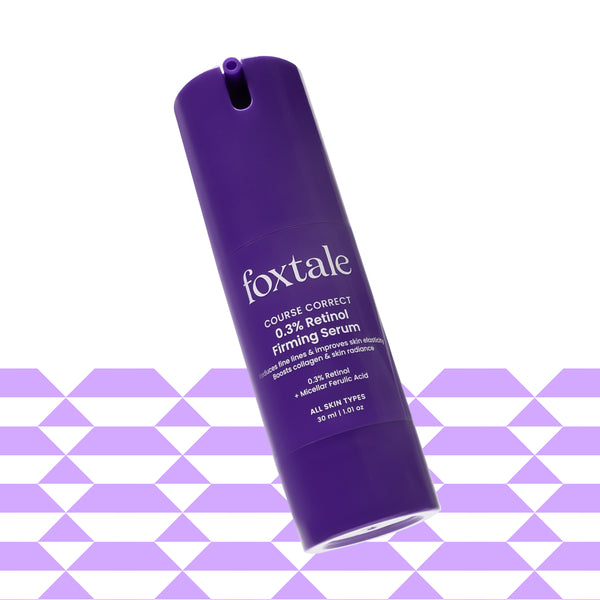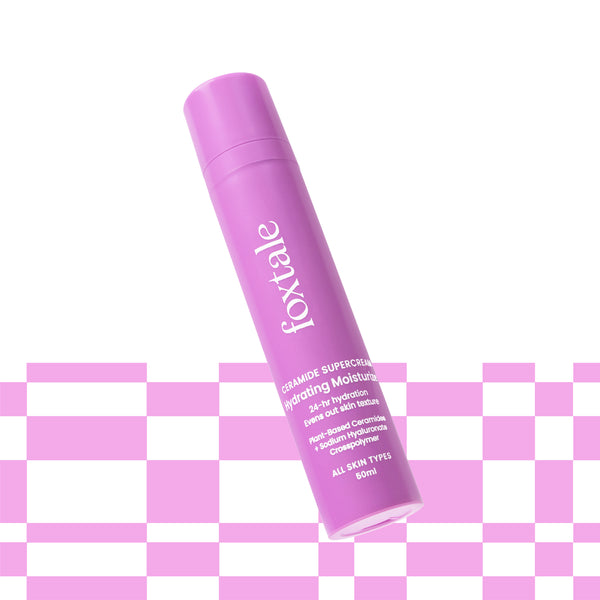
Walk into any skincare aisle and you’ll notice two names everywhere: Ceramides and Retinol. Both are considered heavy hitters, but they don’t serve the same purpose. One focuses on keeping your skin barrier strong, the other speeds up cell renewal to fight visible signs of aging. Knowing how each works helps you figure out which ingredient deserves space in your routine.
What Are Ceramides?
Ceramides are fats that occur naturally in your skin. Picture the outer layer of your skin as a wall: Ceramides act like the mortar that keeps the bricks together. When levels drop, cracks form, and that’s when dryness, tightness, and irritation show up.
Their main job is simple but vital, which is to lock in the moisture and shield your skin from external irritants like pollution or harsh weather. If your barrier weakens, you’ll notice faster water loss and more frequent flare-ups.
Benefits of Ceramides
1. Long-lasting hydration
Ceramides trap water in the skin, which helps with elasticity and comfort. If moisturizers don’t seem to work for you, the missing piece could be Ceramides.
2. Repairing the barrier
A healthy barrier is your first line of defense. By replenishing Ceramides, you restore strength so skin can handle daily stress better. Here’s a closer look at the benefits of Ceramides.
3. Safe for sensitive skin
Unlike other actives, Ceramides are well-tolerated by most skin types. They calm sensitive or reactive skin and are often recommended for conditions like eczema. A Ceramide moisturizer works especially well if your skin gets irritated easily.
What Is Retinol?
Retinol is a derivative of Vitamin A and has decades of clinical backing. Once applied, skin enzymes convert it into Retinoic acid, which communicates directly with skin cells to boost renewal.
So, what does retinol do? It encourages old cells to shed faster and stimulates Collagen production underneath. Over time, skin becomes smoother, firmer, and more even in tone.
Benefits of Retinol
1. Anti-aging support
Retinol for skin is unmatched when it comes to softening fine lines and keeping early wrinkles at bay.
2. Breakout control
Retinol's purpose is to clear pores and reduce the buildup that often leads to acne. For oily or acne-prone skin, Retinol is one of the most effective options.
3. Better texture
Rough patches and uneven tone gradually improve with regular use. A targeted Retinol serum combines it with calming ingredients to balance results with comfort.
Ceramides vs Retinol: How They Compare
Function
1. Ceramides focus more on hydration and protection of the skin.
2. Retinol tends to drive more regeneration and renewal of the skin.
Best Suited For
1. Ceramides: dry, sensitive, or compromised skin that needs stability.
2. Retinol: oily, breakout-prone, or maturing skin seeking smoother texture and fewer wrinkles.
Side Effects
1. Ceramides: rare reactions, safe for daily use.
2. Retinol: dryness, redness, or mild peeling—especially when you’re just starting out.
Can Ceramides and Retinol Work Together?
Yes, and in practice, they complement each other well. Retinol can be irritating at first, but Ceramides buffer that effect by reinforcing the barrier. The result: you still get Retinol’s resurfacing benefits without as much discomfort.
How to Layer Them
Apply Retinol first so it can seep deep into the skin. Seal everything in with a Ceramide moisturizer afterward to lock down hydration. If you’re new to retinol, ease in—use it once or twice a week and step up only when your skin feels ready. Keeping Ceramides in your routine daily makes the adjustment phase far smoother.
Choosing the Right Products
If your skin is dry or reactive
Go for products rich in Ceramides. A Ceramide moisturizer is especially useful at night, when skin loses more water.
If your focus is aging or breakouts
Pick a Retinol serum that matches your experience level. Lower strengths work well for beginners, while advanced users can explore higher percentages. Look for calming add-ons like Niacinamide or Hyaluronic Acid in the same formula.
Final Thoughts
Ceramides and Retinol aren’t rivals. They solve different problems. Ceramides keep your skin strong and hydrated, while Retinol speeds up renewal for clearer, firmer skin. If your barrier feels fragile, start with Ceramides. If fine lines or acne are top concerns, bring in Retinol. Used together, they strike the balance between comfort and visible results.
FAQs
What not to pair with Ceramides?
Nothing major. Ceramides blend well with almost every ingredient.
What to apply first, Ceramide or Retinol?
Apply Retinol first, then layer a Ceramide-based cream to support the barrier.
What not to mix with Retinol?
Skip combining Retinol with strong exfoliating acids in the same routine—they can amplify irritation. Alternate them on different nights instead.





